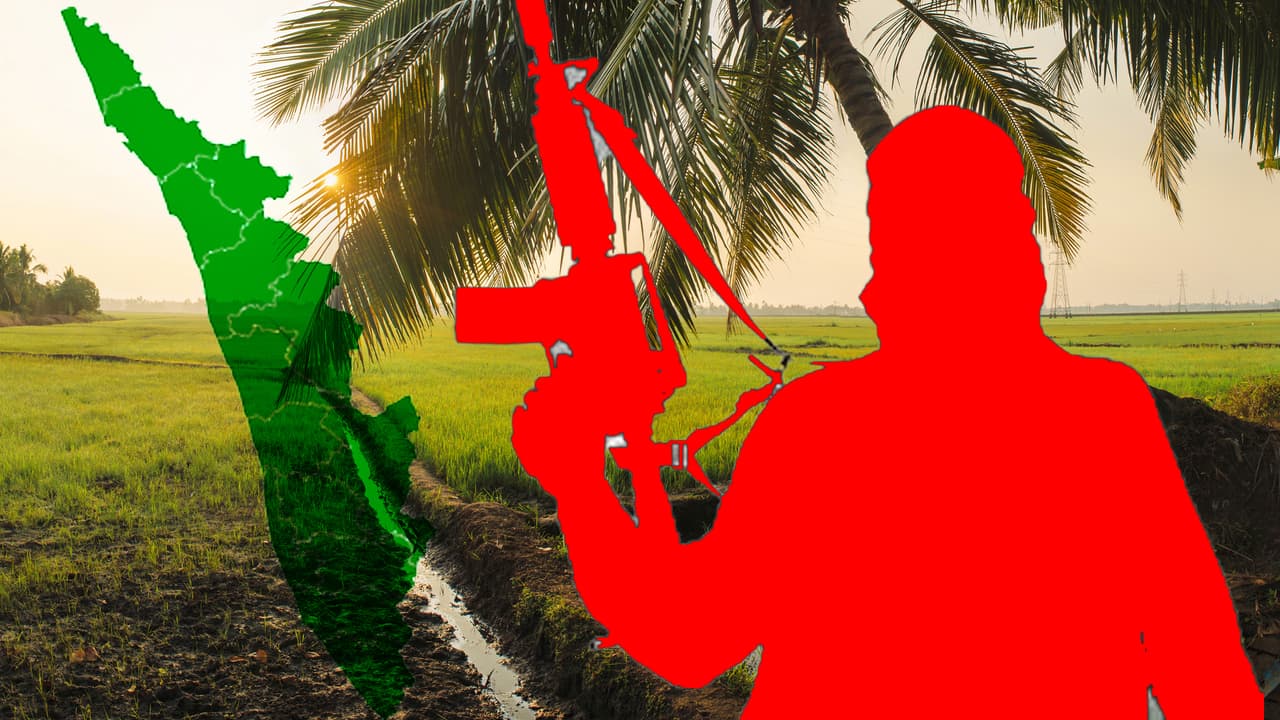Kerala was well-known for the alleged presence of Maoists and Naxalites. The recent inclusion of three districts from the state in the Union Home Ministry’s list of 126, while doing away with 44 from other places, has brought the total count to 90 Naxalism-hit districts.
Kerala was well-known for the alleged presence of Maoists and Naxalites. The recent inclusion of three districts from the state in the Union Home Ministry’s list of 126, while doing away with 44 from other places, has brought the total count to 90 Naxalism-hit districts. In the 1960s, when West Bengal decided to lend a village the name of a potent far-left ideology – Naxalbari, the hills of Wayanad and other north Kerala districts too became hotbeds of Naxalism. These districts have seen the rise and fall of Left-Wing extremism and all of it fall back on a person whose memorial stands tall in the Thirunelly forests in Wayanad. The revered God of the Naxalites, Varghese, was the son of Christian settler parents from Ernakulum, who became the Peruman (saviour) for the people of Wayanad by ending many outrageous practices of the landlords, including being credited with ending bonded labour there.

The former Kannur district secretary of the CPI (M) moved to Wayanad and became the leader of the CPI (ML) and forced the landlords, who practised bonded labour to scrap the ‘Valli’ (paddy for work) system and replaced it with wages. He, along with K Ajitha, now a prominent feminist/activist spearheaded what is today known as the ‘Spring Thunder’ that reformed the lives of Adivasis, but did not leave a lasting impact blunting the Red’s ideology.
Seems like over the years it just got darker and we cut to 2014: the rebels had allegedly set up the Western Ghats Special Zonal Committee in the forests that connect the states of Kerala, Tamil Nadu and Karnataka, breeding the fear of Naxalism threat ever more strongly. The threat that came to be known as Kerala’s bogey, an issue that was talked about everywhere, just turned ‘real’.
Kerala’s Maoist
-sighting stories have stuck to almost the same script with people visiting houses at night and the police coming over the next day with grainy photos for identification and this has been repeated across villages in Malappuram, Kozhikode, Wayanad, Kannur and Palakkad districts.
The inclusion in the list is allegedly not because of occurrence of violent incidents, but due to multiple Maoist sightings that were reported last year. They fear that the insurgents are close to establishing a base in the region.
The earlier data did not feature the state’s name, but the continued efforts of Naxalites to spread their activities in the region and the establishment of several ‘Revolutionary People’s Committees’ in many areas along the Kerala-Karnataka-Tamil Nadu border has resulted in placing the state government and its police department under the scanner.
